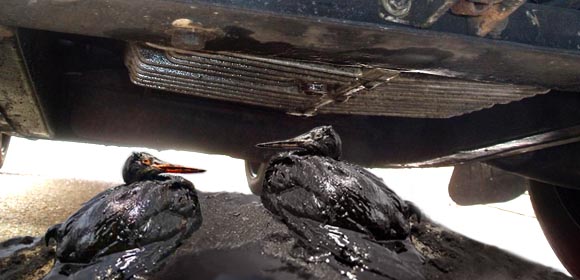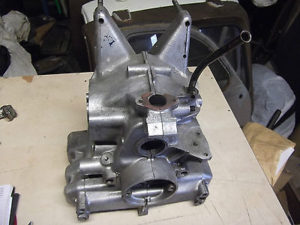(Requires paid membership to access.)
One of our members in Richmond BC, was facing a dilemma; living with 6 grams of oil that was leaking from his 2CV each day! His mechanic, a 2CV guy, said the motor was just too rough to seal up and an expensive engine rebuild was something that he did not want to undertake. Instead he developed a drip tray holder for his 2CV and is making the design available to other members.

As you can see it is a magnetic tray with a changeable cardboard insert to absorb the oil. With 3″ magnets it really adheres to the chassis but it is not advisable to leave it on when the car in in motion. Anything not bolted down has the potential to drop off and you don’t to see this tray in your rear view mirror being impaled on the vehicle behind you!
If you are seeing a gearbox oil on the floor, look to ensure there is are copper gasket rings on the drain and filler plugs, or look to replace the drive-shaft seals going into the gearbox housing. If you have a 2CV with a fluid leak and are anal about having no spots on the garage floor this is obviously one option though we suggest you make plans to deal with the root of the problem as soon as you can afford to. The source of an oil leak from a 2CV is usually either the oil seal on the crankshaft, the valve cover gaskets, the drain plug copper gasket, the fuel pipe gasket, the oil fill breather neck gasket, seals on the oil lines to the cylinders, the seals connecting the oil cooler or on later models with an oil filter, failure to properly tighten it. None of these would necessitate an engine rebuild, so we are perplexed as to why this particular 2CV has a leak to the tune of 6 grams a day.
Perhaps his 2CV had an engine rebuild at some point where the surface of the two sides of the engine casing got scarred. These were machined so precisely during manufacture that no gasket was originally fitted and no gasket should ever be installed.



Gee, I wonder if by applying a thin layer of a J B Weld at the seams may have helped the oil leaking in the first place¿
Once upon a time VEGE (Netherlands) was the main supplier of rebuilt engines for 2CVs. Towards the last few years of production, they used a gasket material on the faces of the crank case halves that worked well when new, but would, after many years dry out and allow oil to begin leaking through the seam. I have has decent success by cleaning thoroughly and applying a bead of JB weld, as Prakash suggests. Nowadays Burton is the industry leader for quality rebuilt engines. They are keenly aware of the problem and use the best sealant available. They also use Viton seals on the pushrod tubes etc.